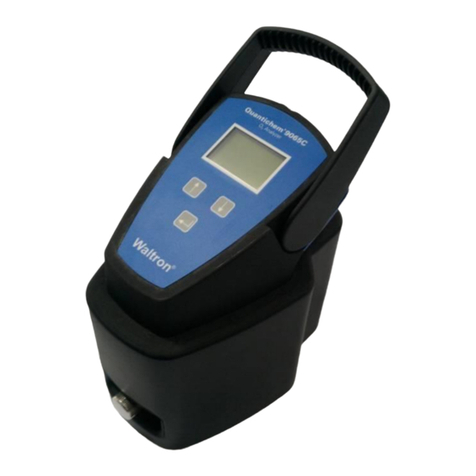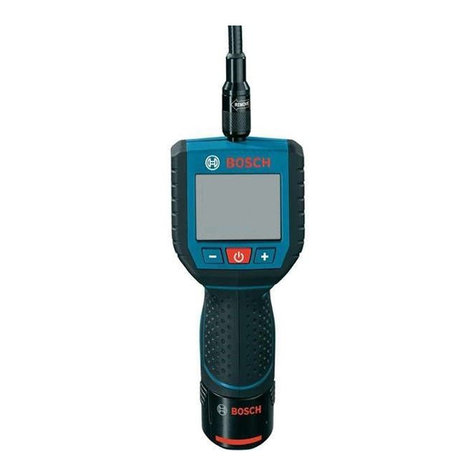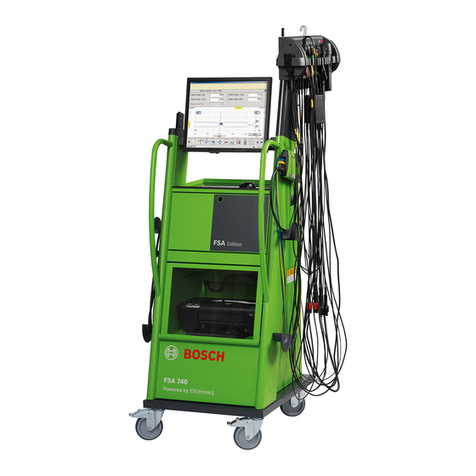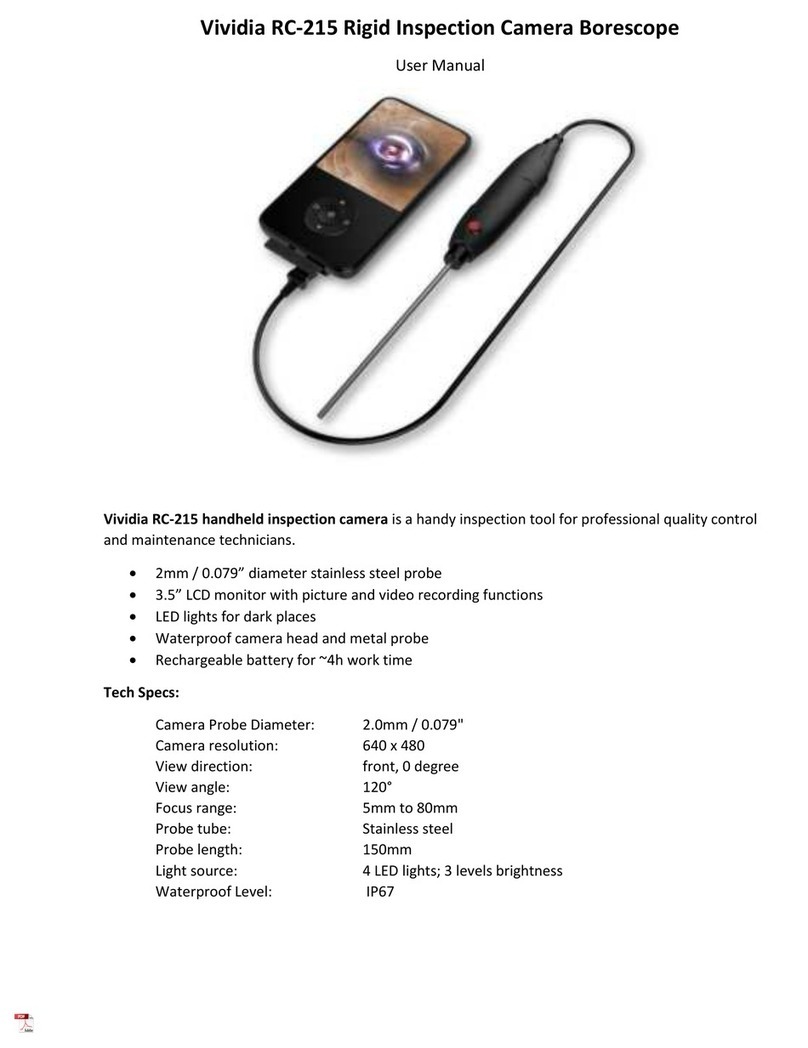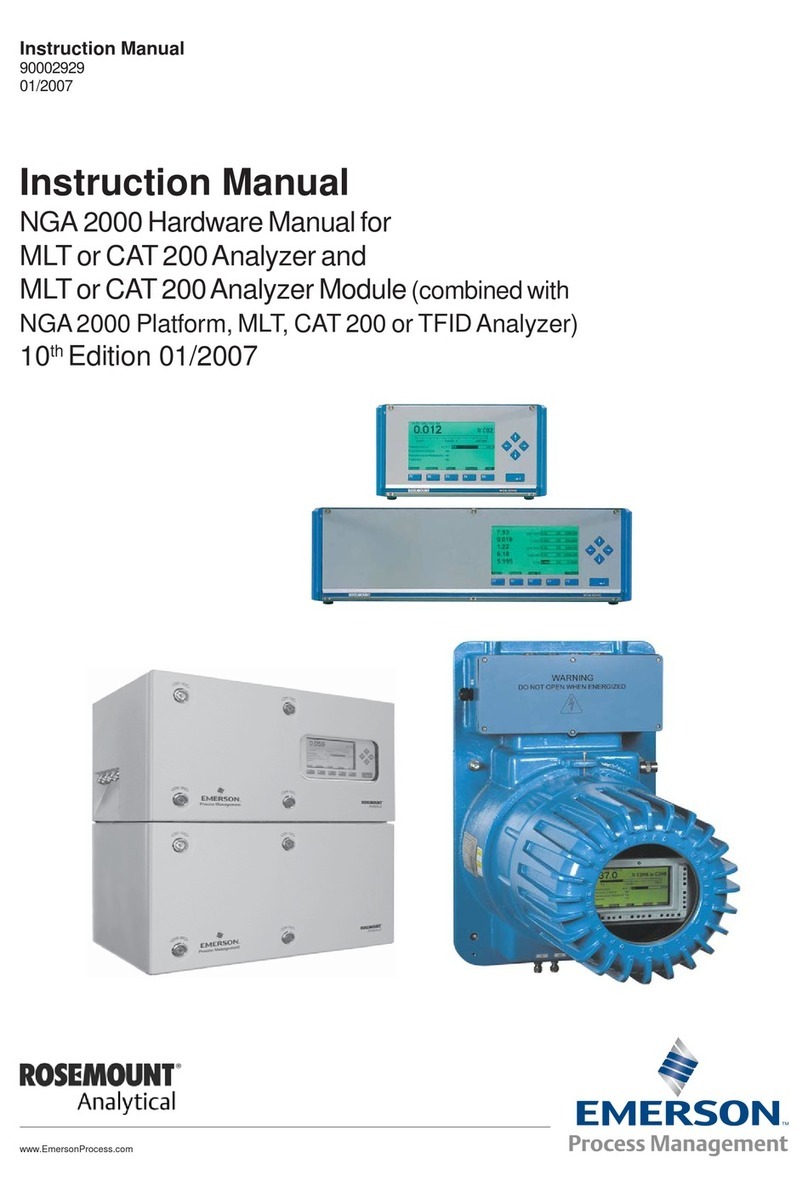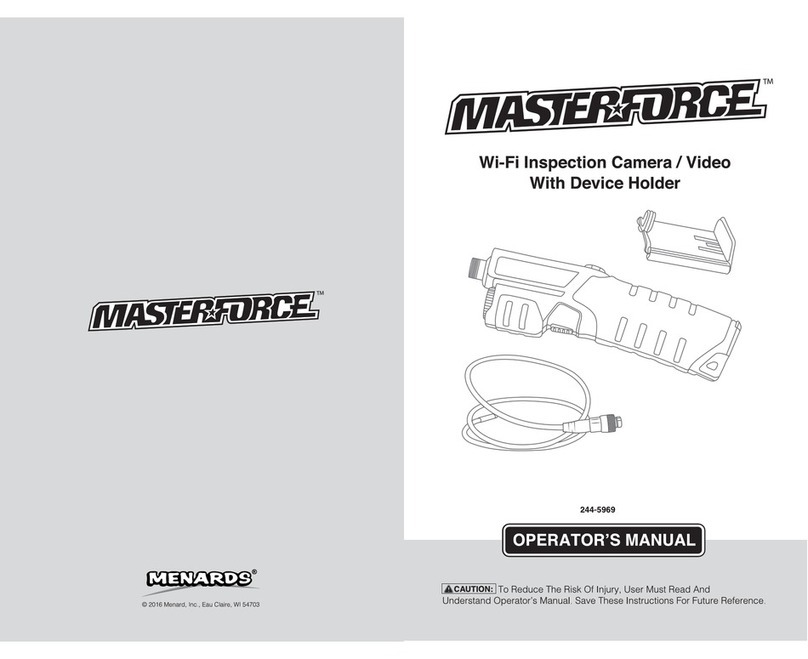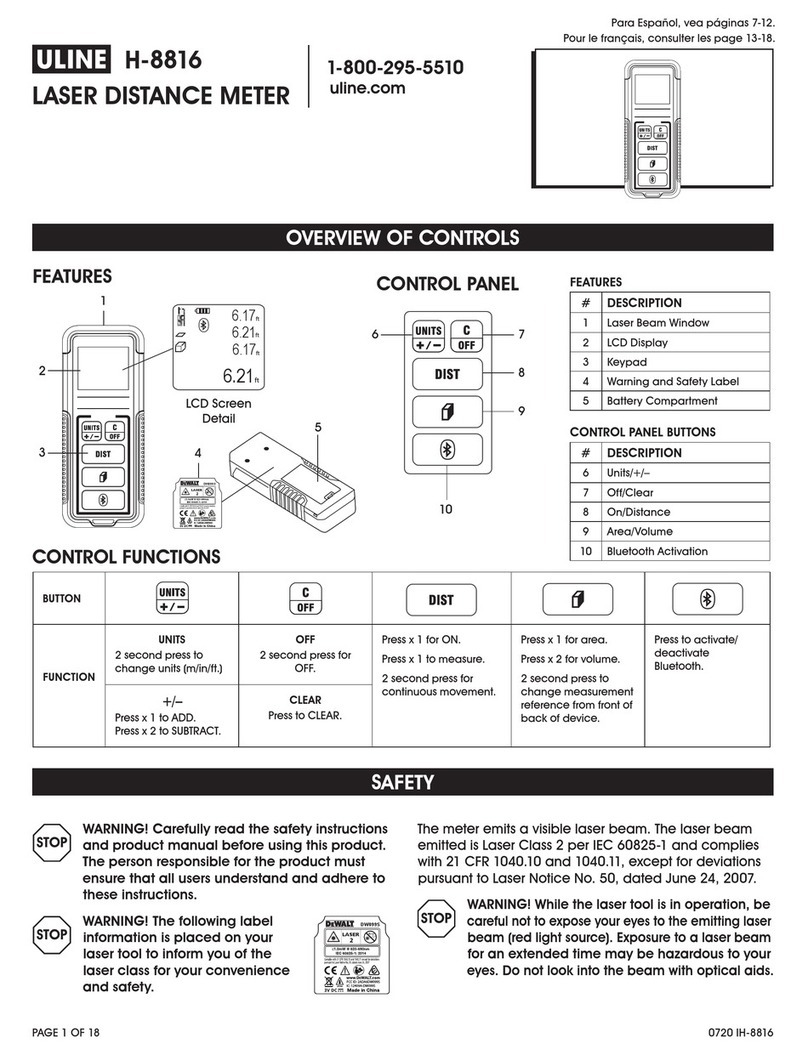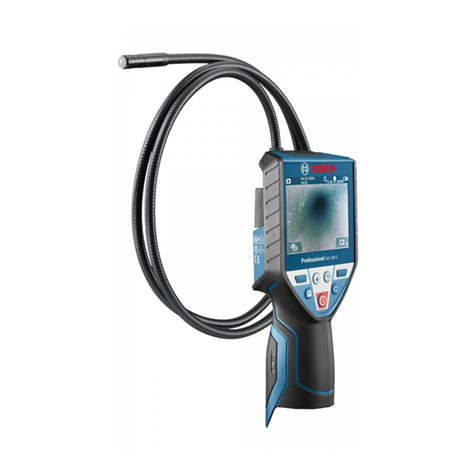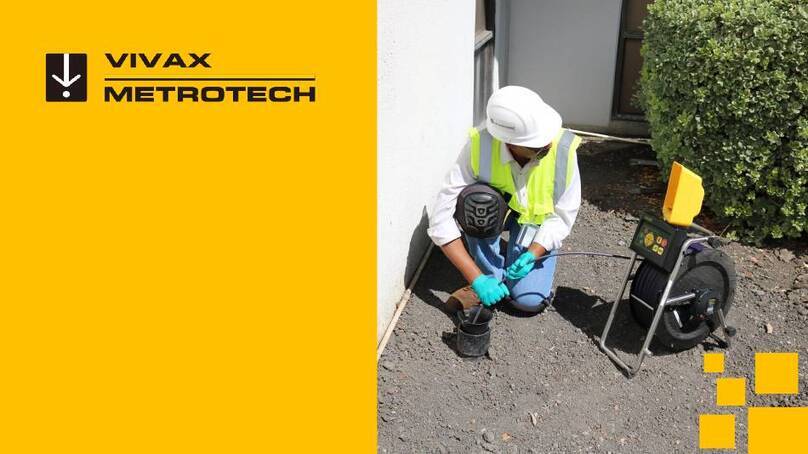Macherey-Nagel NANOCOLOR 500 D User manual

MN
MACHEREY-NAGEL
MACHEREY-NAGEL GmbH & Co. KG · Neumann-Neander-Str. 6–8 · 52355 Düren · Deutschland
Frankreich:
France:
Tel.: +33 388 68 22 68
Fax: +33 388 51 76 88
e-mail: [email protected]
Schweiz:
Switzerland:
Tel.: +41 62 388 55 00
Fax: +41 62 388 55 05
E-Mail: [email protected]
Deutschland und weltweit:
Germany and worldwide:
Tel.: +49 24 21 969-0
Fax: +49 24 21 969-199
E-Mail: info@mn-net.com
www.mn-net.com
Bedienungsanleitung
Manual
NANOCOLOR ®500 D
Analysen von Trink-, Oberflächen-,
Grund-, Brauch- und Abwasser
Analyses of drinking, surface, ground,
process and waste water
MACHEREY-NAGEL
EN ISO 9001: 2008
CERTIFIED
MACHEREY-NAGEL
ZERTIFIZIERT
EN ISO 9001: 2008

500 D 01/2012
CONTENTS Page
A. General part (white pages)
1. Photometer NANOCOLOR ®500 D 1a
1.1 Technical data 1a
1.2 Design of the photometer 2a
1.3 Filters 3a
1.4 Power supply and light source 3a
1.5 Interface description 4a
1.6 Barcode 4a
1.7 Update via INTERNET 4a
2. Preparation for operation 5a
2.1 Calibration of the NANOCOLOR®500 D 5a
3. Operation 6a
3.1 Keyboard 6a
3.1.1 Special functions of certain keys 7a
3.2 Measuring procedure 7a
3.3 Scheme of operation for NANOCOLOR®tests 9a
3.3.1 Scheme of operation when using tube tests with barcode 9a
3.3.2 Scheme of operation when using tube tests with or without
barcode or for manual operation 9a
3.3.3 Scheme of operation for standard tests 11a
3.4 Basic photometric functions 13a
3.4.1 901 FACTOR 13a
3.4.2 902 STANDARD 14a
3.4.3 903 EXTINCTION 15a
3.4.4 904 KINETICS 15a
3.4.5 905 TRANSMISSION 16a
3.5 Special functions 17a
3.5.1 Display of extinction 17a
3.5.2 Reaction time 17a
3.5.3 Memory administration 18a
3.5.4 Special(user-dened)methods 21a
3.5.5 Numbering of samples 23a
3.5.6 Identicationofsamplinglocations 23a
3.5.7 Dilution of samples 24a
3.5.8 Automatic determination of a correction value 24a
3.6 CongurationoftheNANOCOLOR®500 D 25a
3.7 Data transfer 29a
3.8 Troubleshooting 30a
4. Preparation of samples 31a
4.1 Crack Set 32a
4.2 NANOCOLOR®NanOx Metall 33a
4.3 NANOCOLOR®NanOx N 35a
5.11 Procedures for photometric analyses with NANOCOLOR®tests
when samples are colored or turbid 36a
5.11.1 Determination of correction values for NANOCOLOR®tube tests 37a
5.11.2 Determination of correction values for NANOCOLOR®standard
tests with reagent blank value 39a
5.11.3 Determination of correction values for NANOCOLOR®standard
tests with sample blank value 40a
B. Appendix (colored pages)
Instructions for use for all NANOCOLOR®reagent sets, arranged by test number

500 D 01/2012
1a
1. Photometer NANOCOLOR ®500 D
The NANOCOLOR®500 D is not only a high-performance photometer, it also
features versatile software capabilities. With its large reserves of light at all wave-
lengths, the user can perform precise measurements, even at high extinctions.
Storage of all NANOCOLOR®analytical methods and multilingual user guidance
facilitate measurement. Additional programmes such as measurement of extinction,
kinetics, data networks, etc. expand the applicability beyond the NANOCOLOR®
analytical system as an instrument which can be used in all types of application in
the laboratory.
Additional features are: processing of non-linear curves, storage of measurement
results,warningforvaluesoutsidethemeasuringrange,sampleidentication,pos-
sibility of programming the user's own analytical procedures, clear readings and
user guidance via graphic display, etc.
1.1 Technical data
Technical data
Singlebeamlterphotometerforawavelengthrangefrom340to860nm
Silicon photo-element
Automatic zero adjustment
Graphic display 128 x 64 pixels
Foil-covered keys with tactile feedback
Cuvettes: rectangular cuvettes 10, 20 and 50 mm
round glass tubes 16 mm OD
Photometric accuracy: ± 1 %
Long-term stability: < 0.002 E/h
Power requirements: 9 V, max. 1 A
Power consumption: max. 9 VA at maximum charging current
Data interfaces: bidirectional RS 232 C interface
Universal Serial Bus USB 1.1
Dimensions: 227 x 282 x 105 mm
Weight: 2.4 kg
This appliance complies with the following EC Directives:
– 73/23/EEC of 02.19.1973 – Low Voltage Directive
– 89/336/EEC of 05.03.1989 (including Amendment Directive 92/31/EEC)
– EMV Directive
Disposal in accordance with EU directive 2002/96/EC
In compliance with EU directive 2002/96/EC, MACHEREY-NAGEL
will accept back and dispose of the old instrument at no cost.
ATTENTION!
It is not allowed to dispose of the instrument using mu-
nicipal waste disposal services. Please talk to your local
MACHEREY-NAGEL contact.

500 D 01/2012
2a
1.2 Design of the photometer
1 graphic display 128 x 64 pixels
2 20-part keyboard
3 barcode scanner
4 cuvetteslotwithautomaticcuvetteidentication
5 socket for connection of mains adaptor
6 RESETpushbutton(subsurface)
7 USB(1.1)interfacefordatatransferandupdate
8 RS 232 C interface for suitable printers and data transfer
0001 Ort 1+0
3,6 mg/L
NH4
05.07.04 09:44
0042
AMMONIUM 10
14
2
3
58
7
6

500 D 01/2012
3a
1.3 Filters
When the photometer NANOCOLOR®500 D is switched on, it automatically per-
formsaltertest.Ifadeviationisfound,theprogramasksforanewcalibration.
Filterswhichhaveleftthecondenceinterval,are displayed as<checklter>.In
order to prevent wrong measurements, further evaluation of tests which require the
defectivelterisblocked.
Filter
position
Wavelength of
the light
a[nm]
HW
bof
thelter[nm]
Color of the
light/lter
Color impression
(reactioncolor)
1345
c60 ultraviolet not visible
2 365 11 deep violet not visible
3 436 12 violet yellow
4 470 10 blue orange
5 520 11 blue-green magenta
6 540 11 green red-violet
7 585 10 orange blue-violet
8 620 10 red blue
9 690 10 deep red deep blue
10 800 10 infrared black
aInterferencelters:±2nm,bHW = band width at half transmission,
ccoloredglasslter
Otherinterferenceltersonrequest.
1.4 Power supply and light source
Rechargeable battery
The built-in rechargeable battery allows stationary and mobile operation of the pho-
tometer NANOCOLOR®500 D. Up to 3000 measurements are possible without
recharging.
Charger / mains adaptor
Ifthedisplayasksfor<chargingbattery>,thephotometerhastobeconnectedto
the mains using the charger / mains adaptor which is supplied with the instrument.
During charging, the photometer can be operated. Permanent operation with the
mains adaptor is possible, overcharging of the battery cannot occur.
Light source
An argon point lamp supplies the light for the measurement (340–860 nm). For
every measurement the lamp emits just a short light pulse. This results in a very
low energy consumption, a long service life of the lamp, and a large number of
measurements per battery charge.
Replacement of lamp
For lamp replacement just remove the round lamp cover at the bottom of the instru-
ment. Now the preadjusted lamp can be easily replaced.

500 D 01/2012
4a
1.5 Interface description
Universal – Serial-Bus
USB 1.1
RS 232 serial interface
COM
9-pin SUB-D plug
interface for computer connection with
MACHEREY-NAGEL software
for program update or data transfer
Please note:
install driver software for USB
Pin 1
Pin 2
Pin 3
Pin 4
Pin 5
Pin 6
Pin 7
Pin 8
Pin 9
–
RXD Receive Data
TXD Transmit Data
–
COM Signal Ground
–
–
–
–
Basic settings:
19200 Baud, no parity, 8 data bits,
1stopbit(19200-N81-SDF*(,))
Baudrates19200(9600printer)
*SDF semicolon delimited format or
optional ASCII format
interface for computer connection with
MACHEREY-NAGEL software for
program update or data transfer
connection of a serial printer
1.6 Barcode
The characteristic data for all NANOCOLOR®tests are stored in the photometer
NANOCOLOR®500 D. Selection of a method via method number is always pos-
sible. With the photometer NANOCOLOR®500 D, the barcode on the test tubes
performs this feature, thus simplifying the measurement and minimising possible er-
rors during operation. The barcode activates the automatic measurement sequence
up to the display of results. The barcode scanner is activated by insertion of the test
tube.
The automatic measurement sequence can be interrupted immediately after inser-
tion of the test tube using the arrow keys, thus allowing selection of another sub-
method. Always insert test tubes with barcode thus into the photometer that the
scanner beam hits the barcode.
WARNING: the barcode scanner is a Laser class 1 product. Do not look straight into
the scanner during reading.
1.7 Update via INTERNET
For updating the internal program of the NANOCOLOR®500 D, the latest
version can be downloaded from the MACHEREY-NAGEL homepage under
www.mn-net.com.
Follow the instructions given there.

500 D 01/2012
5a
2. Preparation for operation
Connect printer and PC, if this equipment is available. Switch on the photometer
using key . Once the system has performed the internal check-up, the photom-
eter name, number and date of program version, current date and time as well as a
symbol showing the state of charge of the battery, are displayed.
When Method:___ / >> cuvette >> is displayed, the photometer is ready for opera-
tion.If<rechargebatter>isdisplayed,connectthephotometertothecharger/mains
adaptor.Starttheinstrumentagain(thebuilt-inbatteryischargedatthesametime).
2.1 Calibration of the NANOCOLOR ®500 D
1. When you switch on the photometer, it performs a self-check.
V2.10 06.05.11
NANOCOLOR 5OOD
NANOCOLOR 5OOD
please wait
2. After this self-check the method selection mode is activated.
17.11.11 16:06
>>
cuvette
>>
Method: ___
3. If during the self-check the photometer measures a deviation, it asks for a new
calibration. Start calibration with key
OK
.
CALIBRATION
17.11.11 16:06
please wait
CALIBRATION
17.11.11 16:06
insert cal.-tube
4. After calibration again the method selection mode is activated.
17.11.11 16:06
>>
cuvette
>>
Method: ___
5. Thecalibrationcanbeactivatedatanytimefromthecongurationmenu.
Filterswhichhaveleftthecondenceintervalaredisplayedas<checklter>(repeti-
tionofthecalibration,ltercleansingorlterchangenecessary).Inordertoprevent
wrongmeasurements,furtherevaluationoftestswhichrequirethedefectivelteris
blocked.Ifallltersaredisplayedas<error>,mostprobablythelampisdefective.
Please contact MACHEREY-NAGEL.

500 D 01/2012
6a
3. Operation
3.1 Keyboard
The photometer NANOCOLOR®500 D
has a 20-part keyboard: 10 numbers
and 10 keys with special functions. The
wholeeldiscoveredwithplasticfoiland
therefore protected against liquid spills.
Tactile feedback for all keys increases
safety of operation.
Explanation of individual keys
Key On/Off switch of the photometer
Keys *...)For entering digits, letters or special characters
Keys
F1
/
F2
/
F3
Double-function keys, for sample number, sampling location
(alphanumeric)anddilution
Key For entering the decimal point
method selection for special methods
Key
ESC
Key for interrupt and return to method selection
Key
U
Roll-mode upward key
interrupt of the automatic program sequence / method selec-
tion / call up previous submethod / next program step / previ-
ous sampling location etc.
Key
U
Roll-mode downward key
interrupt of the automatic program sequence / method selec-
tion / call up next submethod / previous program step / next
sampling location etc.
Key
OK
Enterkey,forconrminganyinput,forconrmingselected
functions, after measurement call-up of correction measure-
ment
Key
MEM.
Key for calling up memory functions, for manually storing or
suppressing the storage of recorded measurement values
Key Call-up key for the extinction program, recalling the extinction
after measurement, display of additional information
Key
NULL
ZERO
Manual zero adjustment
Key SMeasurement key
The result is displayed. Consecutive measurements are
numbered continuously.

500 D 01/2012
7a
3.1.1 Special functions of certain keys
S When the photometer has just been switched on, pressing key Scalls up the
last-used method.
Pressing key in method selection mode directly calls up the extinction pro-
gram.
MEM.
Pressing key
MEM.
in method selection mode calls up memory administration.
Pressing key in method selection mode calls up special (user-dened)
methods.
OK
When the photometer has just been switched on, pressing key
OK
displays the
last stored value.
3.2 Measuring procedure
Characteristic test data
The characteristic data of all NANOCOLOR®tests are stored in the NANOCOLOR®
500 D. After the instrument is switched on and has reached the method selection
mode, the desired methods can be activated by inserting the tube test (barcode
tests)orbyinputofthe3-digitmethodnumber.Thepermanentprogrammingofthe
NANOCOLOR®500 D comprises all characteristic data of the desired test:
analytical parameter; factor; blank or base-line value; dimension; cuvette-
dependent measuring range; wavelength; reaction time; linearity of the calibra-
tion; measuring direction
Method call-up
Many analytical parameters can be measured with different cuvette sizes, measur-
ing ranges, dimensions and measuring wavelengths. The method can be called up
in three possible ways:
1. Insert a barcoded tube test and select the characteristic data using the
U
/
U
keys.Therequiredoptionisconrmedbypressing
OK
.
2. Call up the method with 3 digits or using keys
U
/
U
. Again the characteristic
data are selected using keys
U
/
U
.Thedesiredoptionisconrmedbypress-
ing
OK
.
3. Select the desired option by calling up the 4-digit method number. Now the op-
tion cannot be changed with keys
U
/
U
.
Whenactivatingamethodforthersttime,therequiredsubmethodhastobese-
lected either with keys
U
/
U
and subsequent conrmation with key
OK
or by
direct input of the fourth digit of the method number. When next calling up the main
method,thephotometeroffersthelast-usedsubmethod(1stpriority)and,ifnoother
key is pressed, automatically activates it. If you wish to select another submethod,
you can interrupt the automatic program sequence during a period of about 3 s by
pressing keys
U
/
U
and then select the required submethod using keys
U
/
U
or by direct input of the fourth digit of the method number.

500 D 01/2012
8a
User guidance
The NANOCOLOR®500 D now governs the further course of the measurement by
optical display instructions:
measuring range and dimension, reaction time, zero adjustment, sample num-
ber, sampling location, dilution and readiness to measure any number of samples
If the measuring range is exceeded, or if any other errors arise, these will be
indicated on the display immediately.
Measuring ranges
For each test, the measuring ranges specied in the manual are stored in the
NANOCOLOR®500 D. When the measuring result exceeds or falls short of the
measuring range, the respective limit is displayed and stored with either the symbol
>or<.Dilutionistakenintoaccountautomatically.
Sample number
When pressing key
F1
after a measurement, as long as the cuvette is still in the
cuvette slot, you can assign a 4-digit sample number to the respective measuring
value. After the input this number is displayed in the lower status line. When you
remove the cuvette, the sample number is stored together with all other measure-
ment data.
Sampling location
When pressing key
F2
after a measurement, as long as the cuvette is still in the
cuvette slot, you can assign a 12-character alphanumeric name for the sampling
place. After input this name is displayed in the lower status line (please note that,
although12charactersarestored,max.10characterscanbeshowninthedisplay).
Ifyouhavepreviouslydenedanysamplinglocations,youcanusekeys
U
/
U
to
select from a list of the last 20 names. When you remove the cuvette, the name of
the sampling place is stored together with all other measurement data.
Dilution
When pressing key
F3
after a measurement, as long as the cuvette is still in the
cuvette slot, you can assign a dilution factor to the measuring value, which is directly
after input used to calculate the correct result. When you remove the cuvette, the
dilution factor is stored together with all other measurement data.
Change of dimension
The dimension cannot be changed during the measurement sequence. In this case
you have to start a new method selection.
Cuvette change
When a different measuring range requires a change of the cuvette size, a one-time
zero adjustment for the respective cuvette is necessary. As long as you do not leave
the method, you may then change between cuvette sizes without any further zero
adjustment.

500 D 01/2012
9a
3.3 Scheme of operation for NANOCOLOR ®tests
3.3.1 Scheme of operation when using tube tests with barcode
desired parameter: e.g. COD 160 test 0-26
1. Key
ESC
(ifotherparametershavebeenmeasuredbefore)
17.11.11 16:06
>>
cuvette
>>
Method: ___
2. Insert coded test tube into the photometer.
Display of measuring range
17.11.11 16:06
0261 COD 160
15-160 mg/L O2
3. The interference lter is automatically turned into measuring position and the
cuvette is measured immediately.
17.11.11 16:06
0261 COD 160
0001 place
22 mg/L
O2
1+0
4. If desired, place other sample test tubes in photometer and measure; samples
are numbered in sequence.
3.3.2 Scheme of operation when using tube tests with or without barcode or for
manual operation
desired parameter: e.g. Ammonium 10 Test 0-04
1. Key
ESC
(ifotherparametershavebeenmeasuredbefore)
17.11.11 16:06
>>
cuvette
>>
Method: ___
2. Insert coded test tube into the photometer or enter test number, keys * * $
17.11.11 16:06
004_ AMMONIUM 10

500 D 01/2012
10a
3. Press key
U
rst measuring range is displayed with dimension; press key
U
, until required measuring range and dimension appear (can be repeated
endlessly in roll mode or back with key
U
).
17.11.11 16:06
0041 AMMONIUM 10
0.2-8.0mg/L NH4N
17.11.11 16:06
0042 AMMONIUM 10
0.2-10.0mg/L NH4
This can also be attained if the fourth digit of the 4-digit test number, e.g. L, is
entered straight away.
4. Conrmrequiredmeasuringrangeanddimensionbypressingkey
OK
(does not
applywhen4digitsareentered).Theinterferencelterisautomaticallyturned
into measuring position.
5. Reaction time is displayed. When using test tubes with barcode, reaction time
starts automatically.
17.11.11 16:06
0042 AMMONIUM 10
React.time
15’00
6. Place test tube with sample in photometer, start reaction time with key
OK
or skip
with key
U
.
The test tube with base line value (NULL) is not used.
17.11.11 16:06
0042 AMMONIUM 10
0001 place
3,7 mg/L
NH4
1+0
If a ✔is displayed in the upper status line between time and battery indicator,
automatic storage of results is activated (see Conguration chap. 3.5.3). This
means, that the respective result is automatically stored when the cuvette is
removed from the photometer. If you do not want to store the result, just press
key
MEM.
, and this value is not stored. On the other hand, if storage is deactivated,
the actual result can be stored by pressing key
MEM.
.
7. For entering a sample number press key
F1
. A sample number may have up to
4 digits.
17.11.11 16:06
0042 AMMONIUM 10
0001 place 1+0
sample No.:
_
17.11.11 16:06
0042 AMMONIUM 10
0001 place 1+0
sample No.:
123_

500 D 01/2012
11a
8. For entering a sampling place press key
F2
. The name of a sampling location
may have up to 12 alphanumeric characters. Up to 20 places are stored in a list
and can be selected or edited using keys
U
/
U
0042 AMMONIUM 10
place
? 01
? 02
? 03
? 04
→
17.11.11 16:06
17.11.11 16:06
0042 AMMONIUM 10
1234 place 1+0
place
sewag_
9. For entering a dilution press key
F3
. The dilution is entered as 1 + x, i. e. a
dilution of 1 : 100 is entered as 1 + 99. After input the dilution is directly used to
calculate and display the correct result.
17.11.11 16:06
0042 AMMONIUM 10
1234 sewage B 1+0
dilution:
1+_
17.11.11 16:06
0042 AMMONIUM 10
1234 sewage B 1+0
dilution:
1+99_
17.11.11 16:06
0042 AMMONIUM 10
1234 sewage B
370,0 mg/L
NH4
1+99
10. If necessary, place other test samples in photometer and measure; samples are
numbered in sequence. Current sample number, place and dilution are always
displayed in the lower status line.
3.3.3 Scheme of operation for standard tests
desired parameter with reagent blank value: e.g. Nitrite Test 1-67
1. Key
ESC
(ifotherparametershavebeenmeasuredbefore).
17.11.11 16:06 ✓
>>
cuvette
>>
Method: ___
2. Enter test number, keys ! & /.
17.11.11 16:06 ✓
167_ NITRITE
3. Press key
U
,therstmeasuringrangeisdisplayedwithdimension;presskey
U
, until required measuring range and dimension appear (can be repeated
endlessly in roll mode or back with key
U
).
17.11.11 16:06 ✓
1671 NITRITE
0.002-.3mg/L NO2N
This can also be attained if the fourth digit of the 4-digit test number, e.g. !, is
entered straight away.

500 D 01/2012
12a
4. Conrmrequiredmeasuringrangeanddimensionbypressingkey
OK
(does not
applywhen4digitsareentered).Theinterferencelterisautomaticallyturnedinto
measuring position.
5. Reaction time is displayed, start with key
OK
or skip with key
U
.
1671 NITRITE
React.time
10’00
17.11.11 16:06
6.
Place cuvette with blank value in photometer and press
NULL
ZERO
for zero adjustment
(usesamecuvettesizeasforsample,e.g.10mm).
17.11.11 16:06 ✓
1671 NITRITE
measure blank
→
Z
7. Place rectangular cuvette with sample in photometer and measure by pressing
key S.
17.11.11 16:06 ✓
1671 NITRITE
measure sample
→
M
17.11.11 16:06 ✓
1671 NITRITE
0001 place
0,26 mg/L
NO2N
1+0
If a ✔is displayed in the upper status line between time and battery indicator,
automaticstorageof resultsisactivated (seeCongurationchap. 3.5.3).This
means, that the respective result is automatically stored when the cuvette is
removed from the photometer. If you do not want to store the result, just press
key
MEM.
and this value is not stored. On the other hand, if storage is deactivated,
the actual result can be stored by pressing key
MEM.
8. For entering a sample number press key
F1
. A sample number may have up to
4 digits.
1671 NITRITE
0001 place
1+0
sample No.:
_
17.11.11 16:06
1671 NITRITE
0001 place
1+0
sample No.:
123_
17.11.11 16:06
9.
For entering a sampling place press key
F2
. The name of a sampling location may
have up to 12 alphanumeric characters. Up to 20 places are stored in a list and can
be selected or edited using keys
U
/
U
.
1671 NITRITE
place
? 01
? 02
? 03
? 04
→
17.11.11 16:06
1671 NITRITE
place
sewag
_
17.11.11 16:06
1234 place 1+0

13a 500 D 04/2010
10. For entering a dilution press key
F3
drücken. The dilution is entered as 1 + x, i.
e. a dilution of 1 : 25 is entered as 1 + 24. After input the dilution is directly used
to calculate and display the correct result.
1671 NITRITE
1234 sewage A
1+0
dilution:
1 +_
17.11.11 16:06
1671 NITRITE
1234 sewage A
1+0
dilution:
1 +24_
17.11.11 16:06
17.11.11 16:06 ✓
1671 NITRITE
1234 sewage A
6,50 mg/L NO2N
1+24
11. If necessary, place other test samples in photometer and measure; samples are
numbered in sequence. Current sample number, place and dilution are always
displayed in the lower status line.
3.4 Basic photometric functions
By calling up method 9xx or using keys
U
/
U
you can access basic photometric
functions.Selecttherequiredoptionintherollmodeandconrmwithkey
OK
.
17.11.11 16:06
Method:
basic functions
tube tests
standard tests
BIO tests
→
17.11.11 16:06
Method:
901 FACTOR
902 STANDARD
903 EXTINCTION
904 KINETICS
→
3.4.1 901 FACTOR
Since the color reactions normally used for measurements obey the Lambert-Beer
Law (E = εxcxd),thephotometercanbecalibratedbyusingafactor.
concentration = extinction x factor
Theaboveappliesonlyto thelimitedrangespeciedfor every test.Testresults,
which exceed this range, should be repeated after dilution of the test sample. Test
results, which are below the range can be repeated using a cuvette with longer opti-
cal path using a new factor or must be recorded as ”smaller than lower range limit“
(e.g.<0.05mg/L).ShouldatestmethodnotconformtotheLambert-BeerLaw,then
the concentration can only be determined by measuring the extinction and reading
the result from a conversion table. At this point we would like to refer to the PC soft-
ware NANOCOLOR®DataExport(REF91902),whichallowscalculationoffactors
andpolynomialsfordevelopmentofuser-denedmethods.

500 D 01/2012
14a
Measurement with factor
1. Select method 901
2. The preset wavelength is displayed. Select the required wavelength using keys
U
/
U
andconrmtheselectionbypressing
OK
. The selected wavelength is
automatically adjusted.
3. Enter factor via keyboard. The accuracy of the display is determined by the num-
ber of decimal places of the factor.
4. Perform measurement following the instruction of the display. (After measure-
ment, as long as the cuvette is still in the cuvette slot, the extinctions can be
displayed by pressing .)
5. Return to method selection using key
ESC
.
The factor is erased.
3.4.2 902 STANDARD
There are certain determinations, where the color reaction strongly depends on
different parameters, such as temperature, time or concentration of the reagents
(e.g.medications).Insuchcasesitisnecessarytoanalyzeastandardwithaknown
concentration, as well as the test sample. The test results are then related to those
of the standard. The Lambert-Beer Law (E1: β1= E2: β2),mustapplyhereonce
again as follows:
unknown concentration = concentration of standard .extinction(testsample)
extinction(standard)
Measurement with standard
1. Measurement with standard 902
2. The preset wavelength is displayed. Select the required wavelength using keys
U
/
U
andconrmtheselectionbypressing
OK
. The selected wavelength is
adjusted.
3. Enter concentration of the standard via the keyboard. The accuracy of the dis-
play is determined by the number of decimal places of the standard concentra-
tion.
4. Perform measurement following the instruction of the display. (After measure-
ment, as long as the cuvette is still in the cuvette slot, the extinction can be
displayed by pressing .)
5. Return to Method selection using key
ESC
.
The standard concentration is erased.

500 D 01/2012
15a
3.4.3 903 EXTINCTION
Theextinctionis abasicterm in photometry,uponwhich allotherdenitions are
based.
extinction = logarithm ( light transmitted through blank value )
light transmitted through test sample
The practical NANOCOLOR®analytical system gives direct reading of results. In
spite of this fact, and especially in cases where the test results are near the limits
of the range, extinction should not be ignored, since the four digit display does not
offer any information about accuracy and consistency of test results. In photometry,
the desired absorbance range lies between 0.1–1.0 extinctions. The extinction of a
test sample can also be called up during other measurement programs.
Negative extinctions are found for methods where a color decrease is used for the
measurement.
Measurement of extinction
1. Select method 903 or directly press key .
2. The preset wavelength is displayed. Select the required wavelength using keys
U
/
U
andconrmtheselectionbypressing
OK
. The selected wavelength is
adjusted.
3. Perform measurement following the instruction of the display.
4. Return to method selection using key
ESC
.
3.4.4 904 KINETICS
Forfollowingthecolordevelopment(reaction)withtime,thekineticsprogramoffers
thepossibilityofrepeatingthemeasurementatdenedtimeintervals,andtostore
and print results.
Measurement of kinetics
1. Select method 904.
2. The preset wavelength is displayed. Select the required wavelength using keys
U
/
U
andconrmtheselectionbypressing
OK
. The selected wavelength is
adjusted.
3. Enter factor via the keyboard. The accuracy of the display is determined by the
number of decimal places of the factor. (For measurement of extinctions enter
factor=1.000.)
4. Settimeinterval(between00’10and60’00min)andconrmbypressing
OK
.
5. Perform measurement following the instruction of the display.
6. Finish the measuring sequence by removing the cuvette. If required insert an-
other cuvette into the photometer and start a new sequence by pressing S.
7. Return to method selection using key
ESC
.

500 D 01/2012
16a
3.4.5 905 TRANSMISSION
Inadditiontotheabsorbance,transmissionisaverysignicantvariableinphoto-
metry. Transmission is the transparency of a sample solution to the light used for
measurement. The transmission is expressed directly as percentage.
Transmission in % = light transmited through test sample x 100
light transmited through blank value
The dimensionless variable light transmited through test sample is referred as the
transmittance. light transmited through blank value
Measurement of transmission
1. Select method 905.
2. The preset wavelength is displayed. Select the required wavelength using
U
/
U
keysandconrmtheselectionbypressing
OK
. The selected wavelength is
adjusted.
3. Perform measurement following the instruction of the display.
4. Return to method selection using key
ESC
.

500 D 01/2012
17a
3.5 Special functions
3.5.1 Display of extinction
After measurement
17.11.11 16:06
0042 AMMONIUM 10
0001 place
8,0 mg/L
NH4
1+0
the extinction of the measured value can be displayed by pressing .
17.11.11 16:06
0042 AMMONIUM 10
0001 place
1+0
1.090 E
Display of extinction, when the measuring range is exceeded
After measurement
16.11.11 16:06
0042 AMMONIUM 10
0001 place
>10,0 mg/L
NH4
1+0
the extinction of the measured value can be displayed by pressing . When
releasing key , the calculated measuring value is displayed. This estimated value
isnotstored;intheaboveexample>10,0mg/LNH4willbestored.
17.11.11 16:06
0042 AMMONIUM 10
0001 place
1+0
2.068 E
17.11.11 16:06
0042 AMMONIUM 10
0001 place
15,1 mg/L
NH4
1+0
3.5.2 Reaction time
If you wish, the reaction time can be displayed before measurement. Press key
OK
to start the clock.
17.11.11 16:06
0042 AMMONIUM 10
React.time
15’00
The reaction time can be skipped or stopped at any time using key
U
or S.
After completion of the reaction time the sample is measured automatically, if there
isacuvetteinthecuvetteslot.Thecongurationmenuallowstocompletelyactivate
or deactivate the reaction timer.

500 D 01/2012
18a
3.5.3 Memory administration
In the standard mode of operation storage is activated (indicated by a ✔between
time and battery display.
17.11.11 16:06 ✓
0042 AMMONIUM 10
0001 place
8,0 mg/L NH4
1+0
As long as the cuvette is still in the cuvette slot, pressing key
MEM.
when storage is
deactivated will store the current measuring result, vice versa when storage is
activated pressing key
MEM.
will suppress storage of the current value.
Ifthedisplayreads<memoryfull>,youhavestored500datasets.Youcaneither
accept this message by pressing
OK
and continue measurements without storage,
or you can call up the memory administration by pressing key
MEM.
, transfer the con-
tents of the memory to a computer, e.g. with the data export program, and then clear
the memory of the photometer.
Thecongurationmenualsoallowstodeactivatestoragecompletely.
Data handling
For memory administration press key
MEM.
in method selection mode.
The display will read either
17.11.11 16:06
MEMORY: 000
or, if any measuring values are stored, e.g.
17.11.11 16:06
MEMORY: 046/046
output ?
✓
The memory administration offers several options for handling data. Using keys
U
/
U
you can select one of the above options.
Table of contents
Popular Analytical Instrument manuals by other brands

Kistler
Kistler KiDAQ 5500A instruction manual
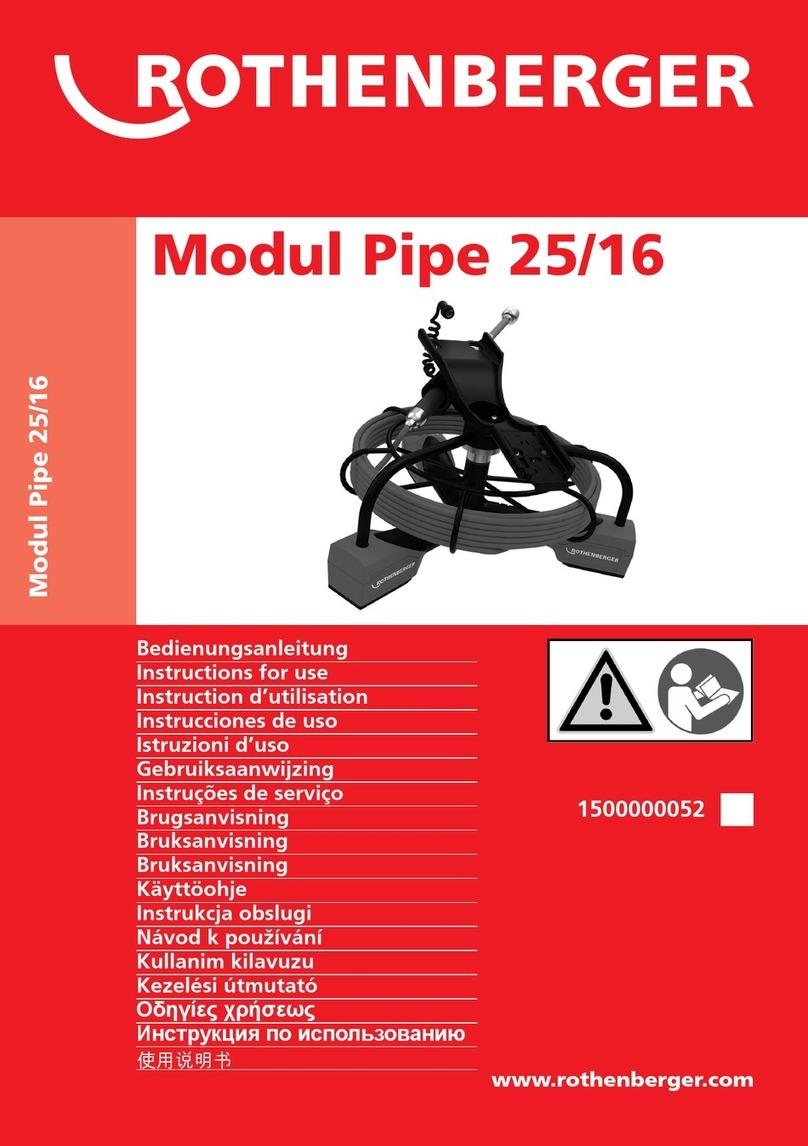
Rothenberger
Rothenberger Modul Pipe 25/16 Instructions for use

Burg Wächter
Burg Wächter LASER METER 50 PS 7550 operating instructions
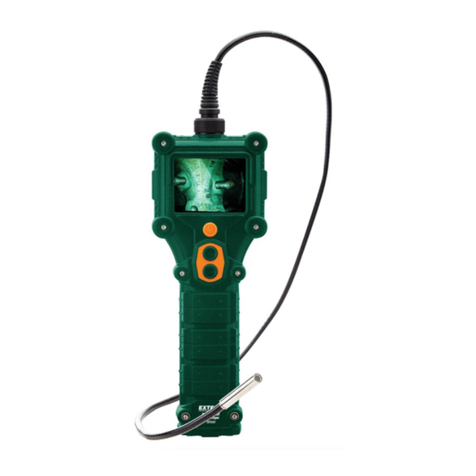
Extech Instruments
Extech Instruments BR300 user guide
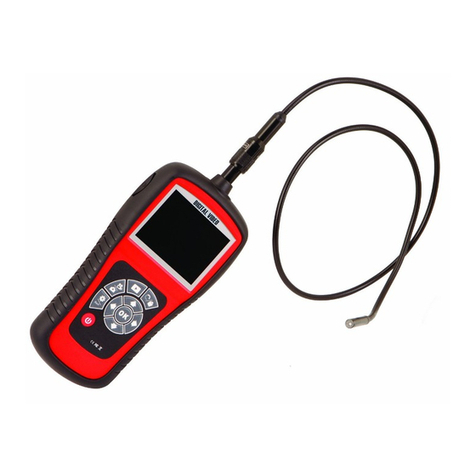
Centech
Centech 67980 Set up and operating instructions
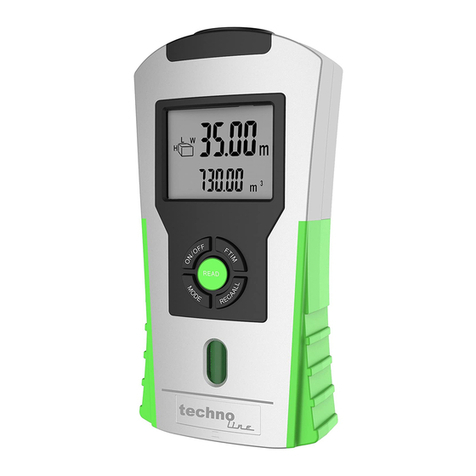
Technoline
Technoline WZ 1100 manual
